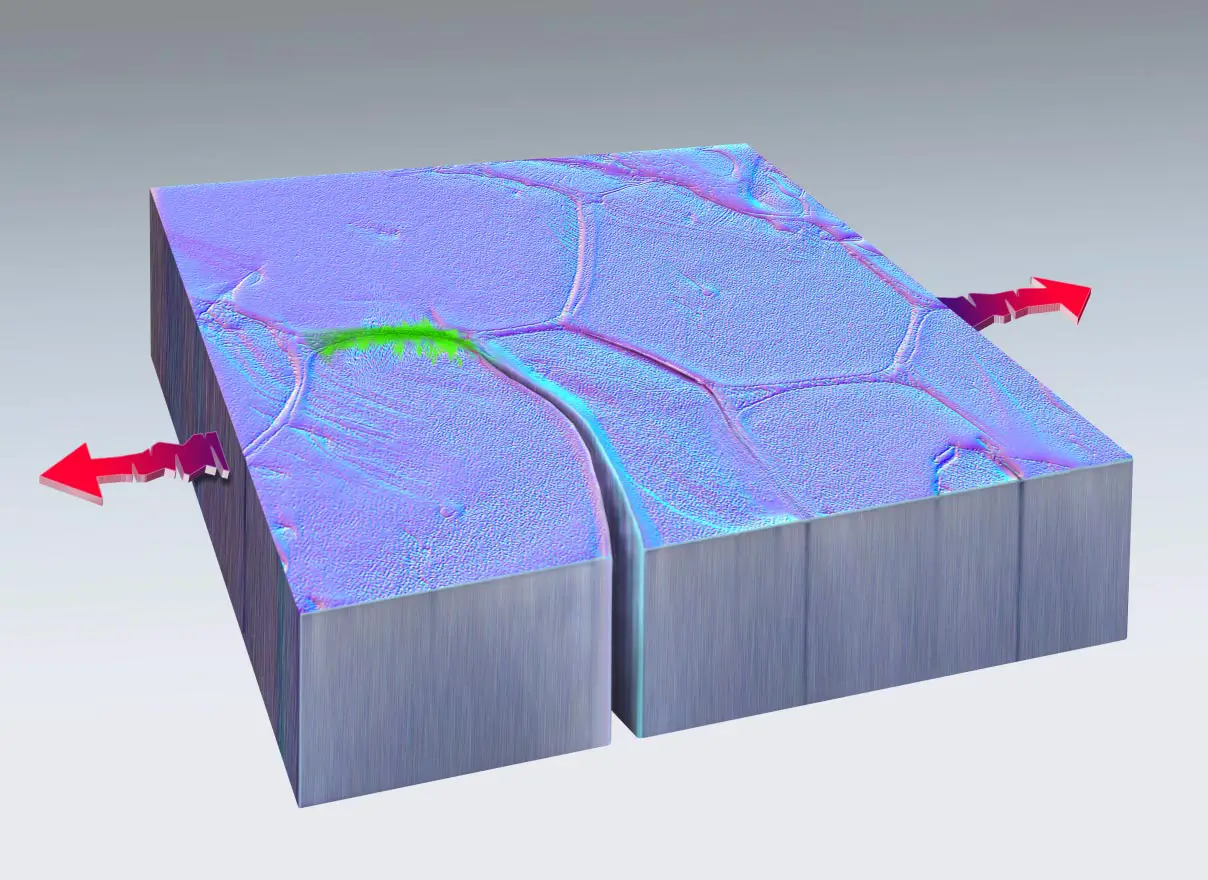In a groundbreaking development, a minute crack in a small platinum sample, subjected to repetitive stretching as part of a fatigue crack growth study, defied expectations by unexpectedly ceasing its expansion and, astonishingly, began to reverse its growth—a phenomenon akin to “self-healing.”
This remarkable occurrence unfolded under the scrutiny of a team of researchers at Sandia National Laboratories during their experiments on nanocrystalline metals. Their findings have been documented in a recent publication in the prestigious journal Nature.
Before this revelation, the concept of self-healing metals was typically relegated to the realm of science fiction. Dr. Michael Demkowicz, a coauthor of the study and a professor within the materials science and engineering department at Texas A&M University, was, however, never confined by such assumptions.
The Past Illuminates the Present
A decade ago, Dr. Michael Demkowicz, while serving as an assistant professor in the materials science and engineering department at the Massachusetts Institute of Technology (MIT), along with his student Guoxiang Xu, made an intriguing prediction about self-healing properties in metals.
Their journey into this groundbreaking discovery was somewhat serendipitous. While Xu was engrossed in simulating fracture behavior, they chanced upon spontaneous healing in one of their simulations. Intrigued by this unexpected phenomenon, they decided to delve deeper into its exploration.
In 2013, when they initially made these predictions, the results were met with considerable surprise and even skepticism. Demkowicz, along with his student and colleagues, harbored doubts about the original theory. However, the subsequent years saw their simulation models gain traction and recognition as other researchers independently observed similar effects in their modeling work. The converging evidence dispelled the notion of errors in the simulations.
An intriguing aspect of this journey is that while their 2013 theoretical models hinted at self-healing in metals, conducting experiments to validate these theories was unattainable until now.
Both the 2013 models and the recent experimental work centered on the use of nanocrystalline metals characterized by a nanoscale grain structure. This structure, although not widely employed in engineering applications, can be replicated in most metals. Demkowicz emphasized that nanocrystalline metals are particularly conducive to studying self-healing due to their small grain size, which facilitates interactions with a greater number of microstructural features, even in the presence of minor cracks.
Both studies revealed the significance of grain boundaries as a feature affecting crack healing, with the direction of boundary migration in relation to the crack dictating the outcome. Demkowicz further noted that these features are prevalent in many metals and alloys and can be manipulated for specific applications.
What Futures May Come
“The current research signifies a pivotal step in transitioning our initial theoretical predictions from the drawing board to tangible reality,” remarks Dr. Michael Demkowicz. He underscores that the endeavor to optimize microstructures for self-healing is yet to commence fully and represents a formidable challenge for future endeavors.
The potential applications stemming from this discovery are wide-ranging. Dr. Demkowicz envisions the prospect of extending self-healing capabilities to conventional metals with larger grain sizes, although further investigations are required to actualize this vision.
A notable commonality shared by both the 2013 theory and the recent experimental work is the necessity for vacuum environments devoid of external matter, which could impede the ability of crack surfaces to bond and self-heal. Despite this limitation, there is potential for applications in spacefaring technology and addressing internal cracks that remain shielded from external atmospheres.
The culmination of a decade-long journey, Dr. Demkowicz’s theory has borne fruit through the groundbreaking experiments at Sandia National Laboratories. For this study, he successfully confirmed that the recently observed phenomenon aligned with his original simulation models.
While he celebrates the remarkable experiment, Dr. Demkowicz also underscores the victory for theoretical science. The inherent complexity of materials often poses challenges in confidently predicting new phenomena. Yet, this discovery provides hope that theoretical models of material behavior are indeed progressing in the right direction.
Reference: “Autonomous healing of fatigue cracks via cold welding” by Christopher M. Barr, Ta Duong, Daniel C. Bufford, Zachary Milne, Abhilash Molkeri, Nathan M. Heckman, David P. Adams, Ankit Srivastava, Khalid Hattar, Michael J. Demkowicz and Brad L. Boyce, 19 July 2023, Nature.
DOI: 10.1038/s41586-023-06223-0
Source: scitechdaily.com


